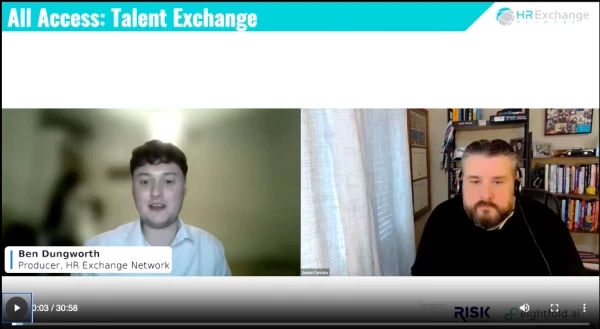Video and Talent Competition
Add bookmarkThe competitive job market that came to fruition in 2018 persists in 2019. In fact, unemployment is at a 17 year low. While that’s significant, the real impact to HR is in the numbers of employees needed for jobs. There are simply more jobs than there are available workers. In December 2018 alone, approximately 312,000 jobs were created.
That has created a very real situation for HR: talent competition is the intense. Some have even labeled it as being fierce. Put simply, not only are HR professionals trying to find the best competition for their companies, so are their competitors. As such, there is a strong desire to find ways to make the company standout and be more attractive to potential job candidates.
Of course, technology hasn’t made it any easier. Traditional recruitment methodologies once highly successful are now obsolete as are some of the tools. A company’s website is a perfect example. According to DigiMe, 28% of users will stop interacting with a website if the layout is unattractive. It’s for this reason many HR, recruitment and talent acquisition teams are turning to video as a way to bring in more talent and create the differentiator between themselves and competitor companies.
To drive that point home, here are some other statistics concerning video:
- By 2021, 82% of all global internet traffic will be video
- Mobile job searches are conducted by 82% of candidates, and by 2021 87% of mobile traffic will be video
- Compared to text and image content on social media, video content gets 1200% more shares
- Video embedded job ad see 800% more engagement according to recruitment agencies
Sources: Cisco/WordStream
Standing Out
Why video? Simply, video allows an HR professional charged with recruitment to say more in 60 seconds than a job ad that takes three minutes to read. In fact, Forrester Research says 60 seconds of video is worth 1.8 million words. DigiMe explains in their latest white paper Competing for Talent.
With color, music, a captivating voiceover that gives the viewer job details, text graphics that display highlights of the job, and high quality footage and images, the candidate gets a much clearer picture than he or she ever would by reading a paragraph of text. A matter of fact, job seekers learn and retain 60% more information while watching and listening versus reviewing text.
DOWNLOAD: Competing for Talent
In most instances, these videos are presented to a candidate before the interview. These videos often describe the company and its culture in concise details. It also can be tailored to a specific team member’s position. In a video format, more information is made available to the candidate about what that person will do in his or her day-to-day activities, what the work environment is like as well as what to expect.
Recruitment Video Best Practices
The good news is it doesn’t take a lot of money to build a solid recruitment video strategy. Depending upon the level of commitment, videos can easily be shot on a mobile device or inexpensive camera, edited and then published. Of course, in some instances higher quality videos are desired. Regardless of which track is chosen, there are some best practices to consider when making a recruitment-related video.
According to Recruiting Daily, those best practices include:
- Defining the goals that need to be accomplished by the video
- Equipment consideration
- Focus on what separates the company from its competition
- Feature employees at different levels
- Be conversational
In summation
The reality is these videos are quite easy to make as long as a well thought out plan and goals are established before shooting takes place. At the end of the day, recruitment videos shared via social media have longevity. Not only that, but they are a powerful way to tell a company’s story and to show the company’s culture in action.

















